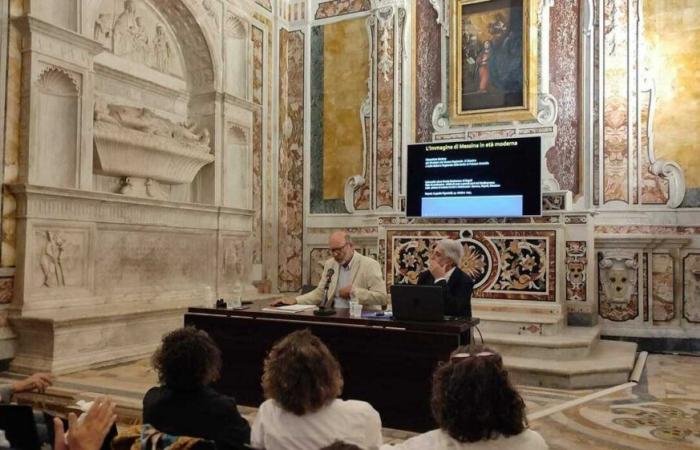Three cities united by a unique port vocation and a strong link with the sea to analyze the link between urban development, cartography and vedute painting, both as testimony and as interpretation of urban and landscape transformations. With this scientific and research objective but also cultural dissemination, the Department of Human Sciences and the School of Specialization in Historical and Artistic Properties of theSuor Orsola Benincasa University of Naples promoted the cycle of meetings on “Maritime cities and large ports of the Mediterranean in vedute painting between the 17th and 18th centuries: Genoa, Naples, Messina”.
In-depth studies now available on demand on the YouTube channel of the Neapolitan University (www.youtube.com/unisobna), which with this initiative wanted to continue its path of promoting the Pignatelli Chapelwhich today has become, thanks to the restoration and reopening work of Suor Orsola, “Gate of the Ancient Center of Naples”, due to its strategic position in Largo Corpo di Napolialigned along the lower decumanus of the Greco-Roman city, where the small Nilo square and San Biagio dei Librai intersect. A function of reception and narration of the city that the Chapel of Santa Maria dei Pignatelli, one of the rarest jewels of Renaissance Naples, fulfills today with the help of advanced multimedia communication technologies that are the basis of the master's course in Digital humanities and the research activities of the doctorate in Humanities and Technologies.
“Naples – tells Pierluigi Leone de Castridirector of the School of Specialization in Historical and Artistic Properties of the Suor Orsola Benincasa University and scientific coordinator of the initiative – is a truly exemplary case of our path of analysis of vedute painting of the 17th and 18th centuries in Italian maritime towns. Because Naples, a maritime city among the most represented by engravers and cartographers between the 16th and 19th centuries, does not have any large painted vedutes, with the extraordinary exception of the so-called “Strozzi Table”, before the beginning of the 17th century.
In the first half of the 17th century, however, there was a great development and popularity of paintings depicting the entire city from the sea, or even parts of it and the gulf, from Posillipo at the Phlegrean Fieldsclearly appreciated by collectors of the time and requested to decorate their palaces and their collections. The protagonists of this production and this “genre” were mainly foreign painters, Flemish or from the north, often arriving in town from Rome, sometimes in transit but sometimes settled here for their entire lives. The conference by Professor Leone de Castris () particularly highlights the complex history of two of these artists, both from Lorraine and friends of each other, François de Nomé and Didier Barra.
The iconography of the Strait of Messina and the views of Genoa
The conference on “The Image of Messina in the Modern Era” () offers a careful selection of paintings and drawings that represent Messina and its Strait, covering a long period from the 15th to the 18th century. century (from Antonello of Messina to Filippo Juvarra), with the aim of tracing a red thread connecting the images together. “From the beginning, the representation of the city of Messina – explains Gioacchino Barbera, former director of the Regional Museum of Messina – appears correlated to that of the Strait, favored by the astonishing beauty of the site, characterized by the unmistakable sickle shape of its port and, in the northwest views, by the majestic and smoking silhouette of Etna which appears in the background. The image of the Strait was therefore gradually and inevitably superimposed on the image of Messina. And depending on the multiple points of view chosen, the Strait ends up being, in turn, the scenic background or the proscenium of the many views of the city, while the Calabrian coast, and in particular Reggio Calabria, is increasingly relegated to a marginal role.
The conference of Piero Boccardoformer director of the Strada Nuova Museums in Genoa () tells, on the other hand, how the views of Genoa from the Middle Ages had as a privileged point of view the sea and the gulf overlooking the city and have had, not only for this reason, over the centuries, some analogies with the views of Naples. “In the 17th century – emphasizes Boccardo – it was mainly precise historical facts, less than fifty years apart, first the construction of the New Walls (1626-1639) then the French bombardment (May 1684), which gave a notable momentum in the views of Genoa, and not only in engraved or painted form, but even in bronze. And it is precisely the second episode which will be the occasion of the first inverted view, that is to say from the land towards the sea, which will then become much more common during the 19th century.
Next meeting at the Chapelle Pignatelli on November 27th with the study day on “Cultural heritage and digital technologies. Research experiences in comparison” (program on www.unisob.na.it/eventi).






